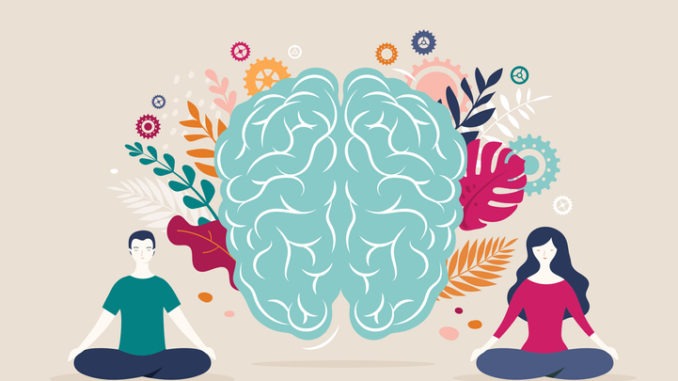
Ross McWilliam, Mental Health First Aid England instructor, gives his top tips on how you can ensure your school is focused on staff wellbeing and mental health
Wellbeing, mental health, and even resilience, are the buzz words that are at the forefront of everyone’s mind at the moment. The COVID pandemic has changed how we live, work and generally interact with each other. The school setting is no different from most other workplaces, except for one small detail – staff are always concerned for the emotional welfare of their children, and sometimes this concern can be to the detriment of their own emotional and physical health.
Whilst this noble, even altruistic, approach is commendable, an exclusive focus on child welfare may make some school staff susceptible to challenges to their own mental health and emotional wellbeing. There must be a balance, as emotionally healthy staff are more able to provide an even more comprehensive wellbeing service to their charges.
For many educational professionals the term ‘mental health’ itself conjures up an image of weakness, or a lack of emotional stability, and the very mention of mental health may suggest a negative deficiency that could slip into conscious or unconscious communication bias. Sadly, from my anecdotal experiences, there is also a gender bias, with many males not seeing the need for school wellbeing – with some even hanging onto the, almost prehistoric, notion that you just need to ‘suck it up’ and be more resilient.
There is also the middle ground of professionals who see mental health and wellbeing as a simple solution – look after your own self, and take control, whether this is by using apps like Headspace or Calm, practicing mindfulness, getting some exercise, having a decent diet, getting good sleep hygiene, or being connected. This approach, albeit drawn from a therapeutically-evidenced base, isn’t a strategy that will suit everyone – one mental health and wellbeing size does not fit all.
A more intelligent and bespoke approach to organisational wellbeing is one that not only considers individual strategies, but also looks at the impact of a considerate, gentle and holistic approach to improving collective wellbeing. Here are six key areas of this collective approach:
- Growing a school culture of conscious and sub-conscious non-stigma, and the use of acceptable mental health language.
- Development of self-awareness, and awareness in others.
- Listening non-judgmentally rather than always trying to solve something with advice.
- Asking questions which engage a colleague and show you care.
- Signposting for independent support.
- Collective acceptance and responsibility in forming a school positive mental health and wellbeing culture.
- Growing a school culture of conscious and sub-conscious non stigma, and the use of acceptable mental health language
Whether we know it or not, we could be perpetuating a negative stereotype of mental health. Worse still, this attitude could actually stop those in need accessing support and recovery. Everyone has mental health, with some having more or less mental health, so we simply need to be aware of any language, or non-verbal communication, that suggests somebody is less. Examples of non-stigma and positive language could be ‘Experiencing a mental health challenge’, ‘They are currently accessing support,’ ‘They have a current diagnosis of bipolar’ (or other specific condition), ‘Is there anything I can do to assist you?’
- Development of self-awareness and awareness in others
Take notice of how you are actually feeling – especially when you take off your professional hat, remove your resilience shield and set down your achievement orientation. Check in to your emotions, feelings and behaviours – what is driving each of these? In line with this, actively practice self-care by taking yourself away from your ‘stress’ points on a daily basis, either on your own or with others.
- Listening non-judgmentally rather than always trying to solve something with advice
Try and listen to understand, rather than listen to interrupt by giving advice about how to fix things; often, it’s the process of just being listening to that is the solution. Everyone has been through a different pathway – and been exposed to various mental health risks and protective factors – so let’s not judge by our own standards.
- Asking questions which engage a colleague and show you care
If we are going to ask questions, open and closed can both be equally effective. For example, using a closed question, if you simply ask, ‘Are you okay?’ the easiest response is ‘Yes’ – but this might not be true. Better to ask a different type of closed question such as, ‘Can I buy/make you coffee?’ which has an inference of sitting down together and chatting. Another example of a good open question might be ‘What can I do to assist you now? What would you like?’
- Signposting for independent support
This could be set up on a school online hub where all staff can add useful contacts, organisations, ideas and tips. Access can be gained anonymously.
- Collective acceptance and responsibility in forming a school positive mental health and wellbeing culture
Identify this in the school mission statement, and on pupil and staff noticeboards. You can also create regular, independent wellbeing meetings – on or off site – staff mentoring/buddy systems and make accredited mental health a CPD focus.
Miriam Alexander, an NHS consultant liaison psychiatrist writing in The Guardian (March 1st 2021) not only re-enforces the message of self-awareness, but also warns against the danger of almost ‘outing’ weaker staff members. She talks about being able to open up, without stigma, about the demands of dealing with this, seemingly never ending, COVID onslaught, where death and illness have, sadly, become an all too familiar daily sight.
“It’s vital we create a work culture that encourages self-awareness rather than self-criticism,” she says. “There may well be individuals who are more susceptible to burnout, but they are not the ‘weaker’ ones; they’re the canaries in the coal mine telling us something is wrong with the system. The lesson is to improve the NHS to make it healthier for all of us.” There will be some staff members who are more liable to burnout before others, for various reasons that we as colleagues may not be aware of, such as their own exposure to historical risk and protective mental health factors. Equally, self-awareness must drive organisational culture, where a collective awareness of the needs of others must be recognised.
I can relate to her viewpoint as, in my work accrediting mental health and wellbeing with NHS frontline staff in the northwest, I can clearly see there is not only a potential for burnout, but also a collective stigmatisation of those who do burnout.
Not only must we be more aware of our own feelings, emotions and behaviours, we must also tune in to be being more aware of the needs of others. We must also not fall into the trap of keeping going, being super-resilient, as nobody can surely keep going forever without there being collateral damage to themselves or others. Even if we could be super resilient to every challenge in front of us, this warrior-type approach might set uncomfortable precedents and expectations for others to live up to. This is the individual and collective resilience caveat that must be respected.
From leaders to the led, we must create a workplace culture that is gently receptive to potential warning signs of burnout and we must signpost, and make available, recovery pathways. Collectively, we must see mental health and wellbeing as a number one priority where the mantra must be ‘mental health non-stigma’.
On a final, slightly lighter note, supposedly the world’s richest man, Jeff Bezos, knows a thing or two about growing a successful business empire. Yet, what many people might find surprising, is that he talks so much common sense about the way we emotionally categorise work and home life, and how personal energy can enhance collective energy.
Bezos is disdainful of the metaphor ‘work-life balance’; he thinks it suggests a loss of one or the other, like a compromise. Rather, he suggests we should call it ‘work-life harmony’, where one positively fuels the other, like a symbiotic relationship. As a practical pointer, he suggests we think about the energy we create or take away when we enter a room of colleagues at work or family members at home!
It might start off with us, but no person is an island, and so we must keep working collectively to secure good wellbeing and mental health, whether that be at work or at home.




Be the first to comment